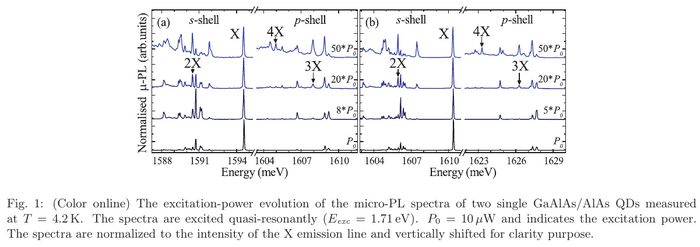Quantum Dot
A Quantum Dot (QD) is a solid-state artificial atom. It basically consists of a trap for an electron or, more likely in a semiconductor an electron-hole pair (exciton). The technology received the Chemistry Nobel prize in 2023.
Unlike atoms, each QD is typically unique. Here are two spectral lines (for various pumping powers) for two GaAlAs/AlAs QDs, from M. R. Molas et al..[1]

The exciton is labelled X and is the most notorious feature, especially at low power. As power increases, multi-exciton states populate the dot and their corresponding lines appear, in a way akin to shell fillings of atoms, thus the names s, p, d, etc. The lines X, 2X, 3X and 4X above are associated with the recombinations from the exciton, biexciton, triexciton, and quadexciton (four excitons), respectively.
Although we tend to study them at an abstract level that makes them essentially a two-level system, quantum dots are central objects of our scientific research.